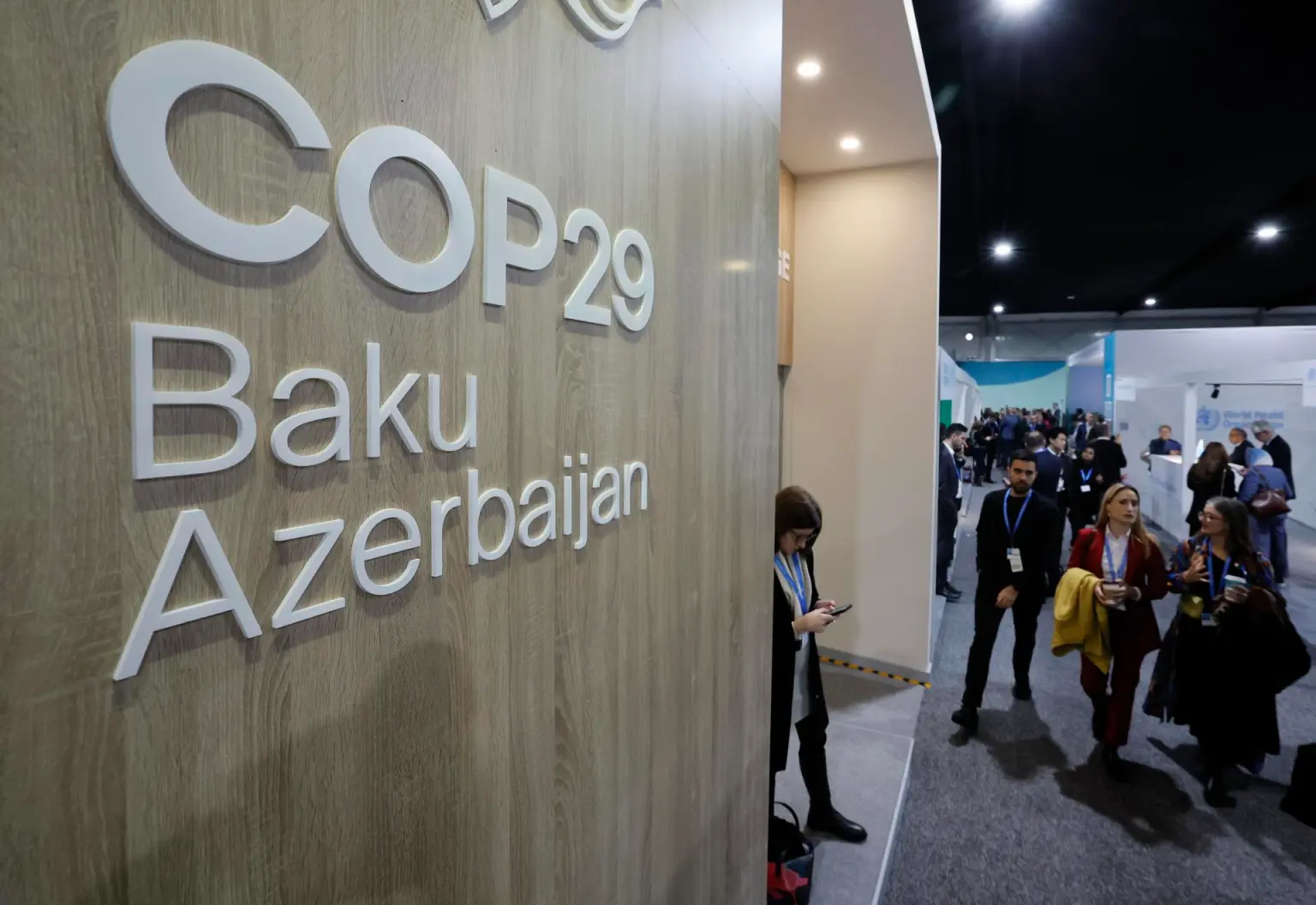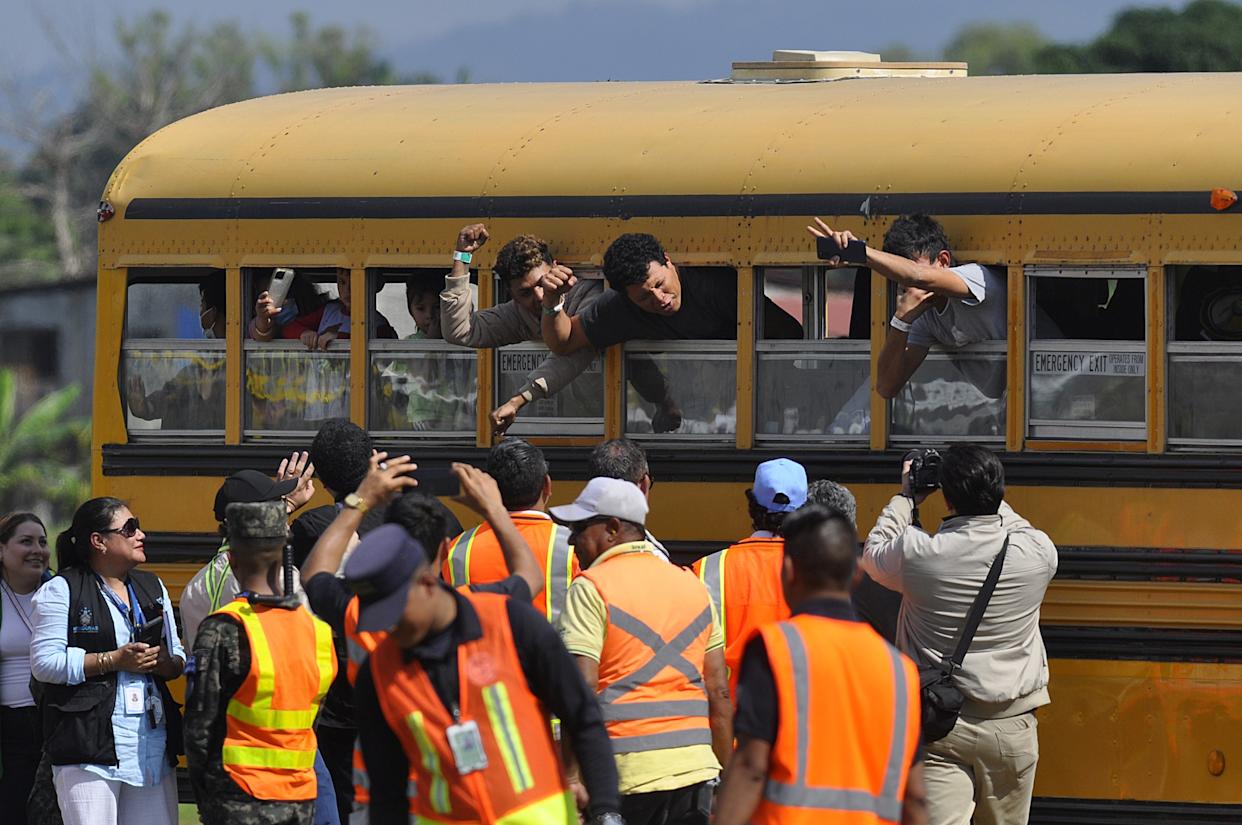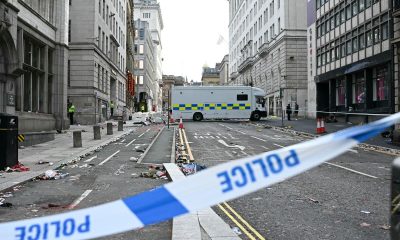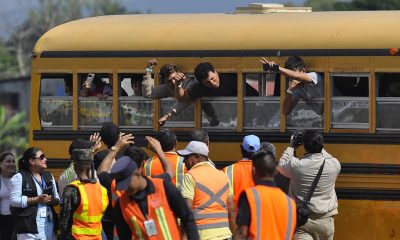International
Possible lack of final agreement overspeaks Baku summit negotiations

Baku can go down in history as another failed climate summit, adding to the list of COPs that ended in failure; with a bad agreement, as in Copenhagen (2009) or without agreement, as in the summit in The Hague (2000).
This is raised in the conversations that negotiators, observers and journalists have this Saturday in the corridors of COP29, after the 24 hours of extension of a summit that was supposed to end on Friday afternoon and in full “chaos” after dozens of countries left the room where the draft of the potential agreement was being negotiated.
The analysts and observers consulted, as well as the negotiating teams, agree to underline the “especially chaotic” end of this summit, from which a not too encouraging outcome is expected: either a “bad agreement” – that does not meet the needs of the Global South to face the climate challenge – or, directly, without agreement.
Pessimism invaded the spaces of the summit that hosts these days the capital of Azerbaijan, and in which about 200 states have been negotiating for two weeks how to finance climate action, especially in those low-income countries and vulnerable to the impacts of global warming.
Everyone mentions the ghost of the failed summits in The Hague and Copenhagen, cases that they would like to avoid, because they fear that going through another failure like this would further undermine the already weaken confidence in multilateralism.
Some developing countries leave the trading room
In addition, small island states and some Africans left the negotiation room where they met the presidency’s latest proposal for the agreement on climate financing that finalizes COP29, where they said they did not feel heard.
Political representatives of the negotiating group that brings together the least developed countries, as well as that of the small island states claimed to have come to the climate summit in Baku to close “a fair agreement” on climate financing, but they have felt “hurt” by not being consulted.
“There is an agreement to be closed and we are not being consulted. We are here to negotiate, but we are leaving because at the moment we do not feel that we are being heard,” said the head of the negotiating group of the island countries, Cedric Schuste, in statements to the media.
“We do everything we can to build bridges with literally everyone. It is not easy, neither in financing nor in mitigation,” stressed the European Commissioner for Climate Action, Wopke Hoekstra, to emphasize that “it is fair to ask that we be constructive.”
Some Latin American and Caribbean states, which are trying to build bridges between the least developed and rich countries, expressed their refusal to admit that this Baku summit is closed without an agreement.
“We cannot leave Baku or Copenhagen,” said Panama’s special climate envoy, Juan Carlos Monterrey, in reference to the climate summit held in the Danish capital in 2009, a meeting that the international climate community considered a failure, by not reaching any agreement.
“We are already at a point of not only building bridges, but walking on those bridges,” Monterrey said, after detailing that the countries had left the consultation mainly because of their discrepancies regarding the total amount that rich countries suggest mobilizing to pay for the climate transition and adaptation to the inevitable impacts of global warming.
“The great struggle is the figure,” said Monterrey, since developing countries at this point support that the goal is 300 billion dollars per year by 2035, and developing and emerging economies ask for 500 billion dollars annually and by 2030.
Lack of transparency in the process
Panama’s main negotiator, Ana Aguilar, also criticized the lack of transparency in the process, something she blamed on the Azerbaijani presidency of the summit, which according to her has had more meetings with some parties than with others, and has been three days without favoring negotiations more than bilaterally.
“We have a problem,” said Colombian Minister Susana Muhamad, who claimed that there is still a long distance between the amount that rich countries propose to mobilize and that requested by those that developing countries.
The proposal of the presidency of the COP29, as reflected in a negotiating text made public on Friday, was that the awealing countries pay 250 billion dollars a year by 2035 to the states of the Global South, to help them pay for action against climate change, a phenomenon to which they hardly contribute but of which they are the main victims.
Now there is talk of 300 billion dollars, while the largest group of developing countries demands at least 500 billion.
The dispute is especially in the quantum, Muhamad said, but also “in some of the requirements that I think we can achieve through negotiation,” he said.
“The problem is that it has been published very late, it was published yesterday. The deadline is very short, so we have some countries, those that have less financial capacity, that do not feel satisfied,” explained Muhamad, who added that “we need them to be able to move and deliberate.”
The Colombian minister said that she will encourage rich countries “to take a step forward” and, she added, “it is very important that they do so so that we can move forward and carry out this negotiation.”
International
Meta Says Russia Seeks to Ban WhatsApp for Defending Secure Communication

U.S. tech giant Meta, the parent company of WhatsApp, said that Russia is seeking to ban the messaging app because it “challenges government attempts to violate people’s right to secure communication.”
Russian authorities have encouraged citizens to switch to state-backed applications, and in August they already blocked WhatsApp’s calling feature.
On Friday, the communications regulator Roskomnadzor claimed that the platform was being used to “organize and carry out terrorist acts in the country, recruit perpetrators, and facilitate fraud and other crimes.”
“If the messaging service does not comply with Russian law, it will be completely blocked,” the regulator warned.
WhatsApp remains one of Russia’s most widely used messaging services, alongside Telegram.
Moscow is pressuring both platforms to grant authorities access to user data upon request for investigations into fraud and activities the government labels as “terrorist.”
Human rights advocates fear the demand could be used to target critics of the Kremlin, President Vladimir Putin, or the war in Ukraine.
International
Archbishop Wenski criticizes Trump’s deportation policies, calls for stronger push for reform

The Archbishop of Miami, Thomas Wenski, has called for increased pressure on the U.S. Congress to advance comprehensive immigration reform and criticized President Donald Trump’s mass deportation policies, arguing that they “do nothing to help.”
“We need to apply more pressure on Congress so lawmakers can make the necessary changes. It is also important for the Administration to listen to our voice. We do not want to be anyone’s enemy—we are Americans,” Wenski said in an interview with EFE.
The religious leader, who heads one of the dioceses with the largest Latino and Haitian populations in the United States, issued a call to defend the rights of migrants. He also emphasized that the U.S. Conference of Catholic Bishops (USCCB) has maintained a strong and public stance in favor of migrants for decades.
International
Trump relaunches diplomatic push to finalize U.S.-Backed peace plan for Ukraine War

U.S. President Donald Trump announced on Tuesday that his diplomatic team will resume meetings with delegations from Russia and Ukraine in an effort to pressure both sides to accept the peace plan proposed by Washington to end the war in Ukraine.
As part of this new round of talks, U.S. Special Envoy Steve Witkoff will travel to Moscow to meet with Russian President Vladimir Putin. Meanwhile, Army Secretary Dan Driscoll will hold discussions with Ukrainian representatives to narrow differences on the remaining points of the agreement.
Trump also confirmed his intention to meet personally with Ukrainian President Volodymyr Zelensky and with Putin, though he emphasized that such meetings will only take place “when the agreement is fully finalized or in its final stage.”
The president claimed that his administration has made “tremendous progress” toward resolving the conflict and reiterated that the war “never would have started” if he had been in the White House at the onset of the crisis.
The U.S.-backed peace plan consists of 28 points and has been revised following feedback from both sides. According to Trump, only “a few points of disagreement” remain under active discussion.
One of the most controversial aspects of the proposal is the suggestion that Ukraine cede parts of the Donbas region to Russia and limit the size of its armed forces. Kyiv is working closely with Washington to soften these clauses in search of an arrangement that does not compromise its sovereignty or security.
With this diplomatic push, Trump aims to solidify his role as the main mediator in the conflict and steer the war toward a political resolution after years of devastation, humanitarian crisis, and rising global geopolitical tensions.
-

 International4 days ago
International4 days agoTrump relaunches diplomatic push to finalize U.S.-Backed peace plan for Ukraine War
-

 International4 days ago
International4 days agoBolsonaro misses appeal deadline, faces imminent prison order by Brazil’s Supreme Court
-

 International4 days ago
International4 days agoMan pleads not guilty in Liverpool parade incident that injured more than 130
-

 Central America3 days ago
Central America3 days agoPanama reinforces security with new helicopters and Super Tucano Aircraft purchases
-

 International4 days ago
International4 days agoMacron to announce new voluntary military service amid rising security concerns in Europe
-

 Central America3 days ago
Central America3 days agoTrump urges hondurans to back conservative candidate Nasry Asfura in november elections
-

 Central America1 day ago
Central America1 day agoTrump Pardons Former Honduran President Hernández and Warns of Aid Cuts Ahead of Election
-

 International3 days ago
International3 days agoArchbishop Wenski criticizes Trump’s deportation policies, calls for stronger push for reform
-

 Central America3 days ago
Central America3 days agoWashington calls for oversight as Honduras faces allegations of electoral interference
-

 International1 day ago
International1 day agoMeta Says Russia Seeks to Ban WhatsApp for Defending Secure Communication






























